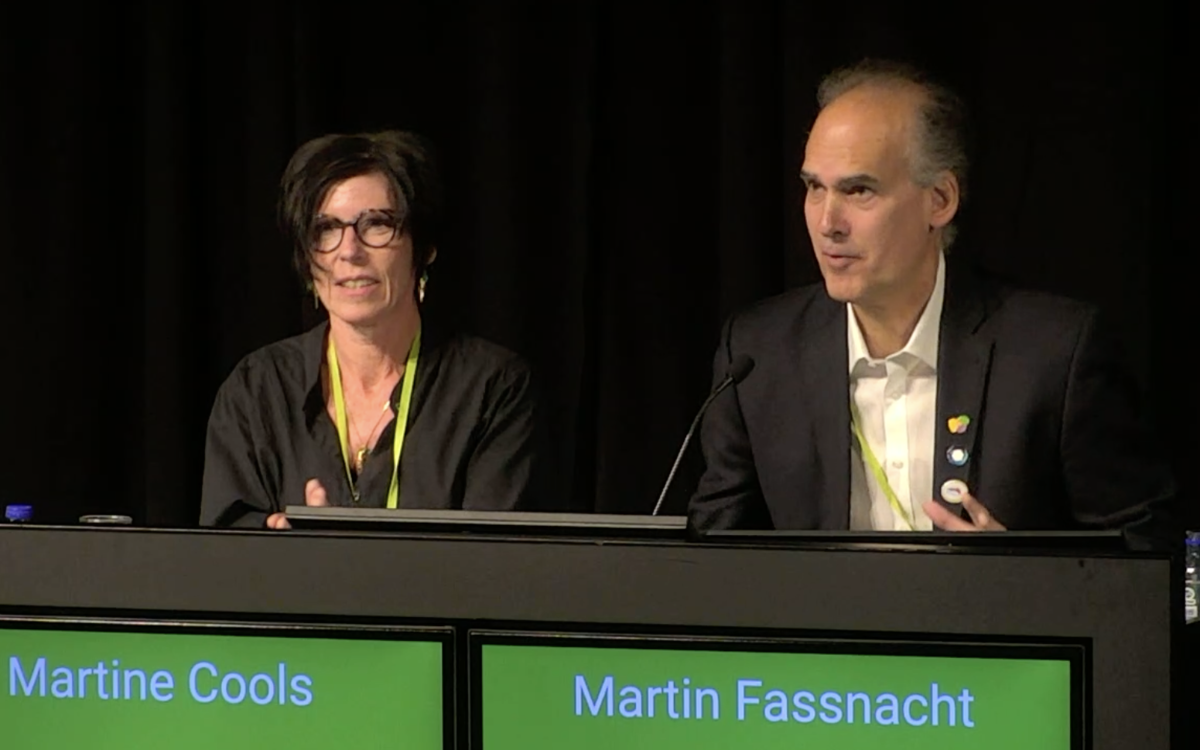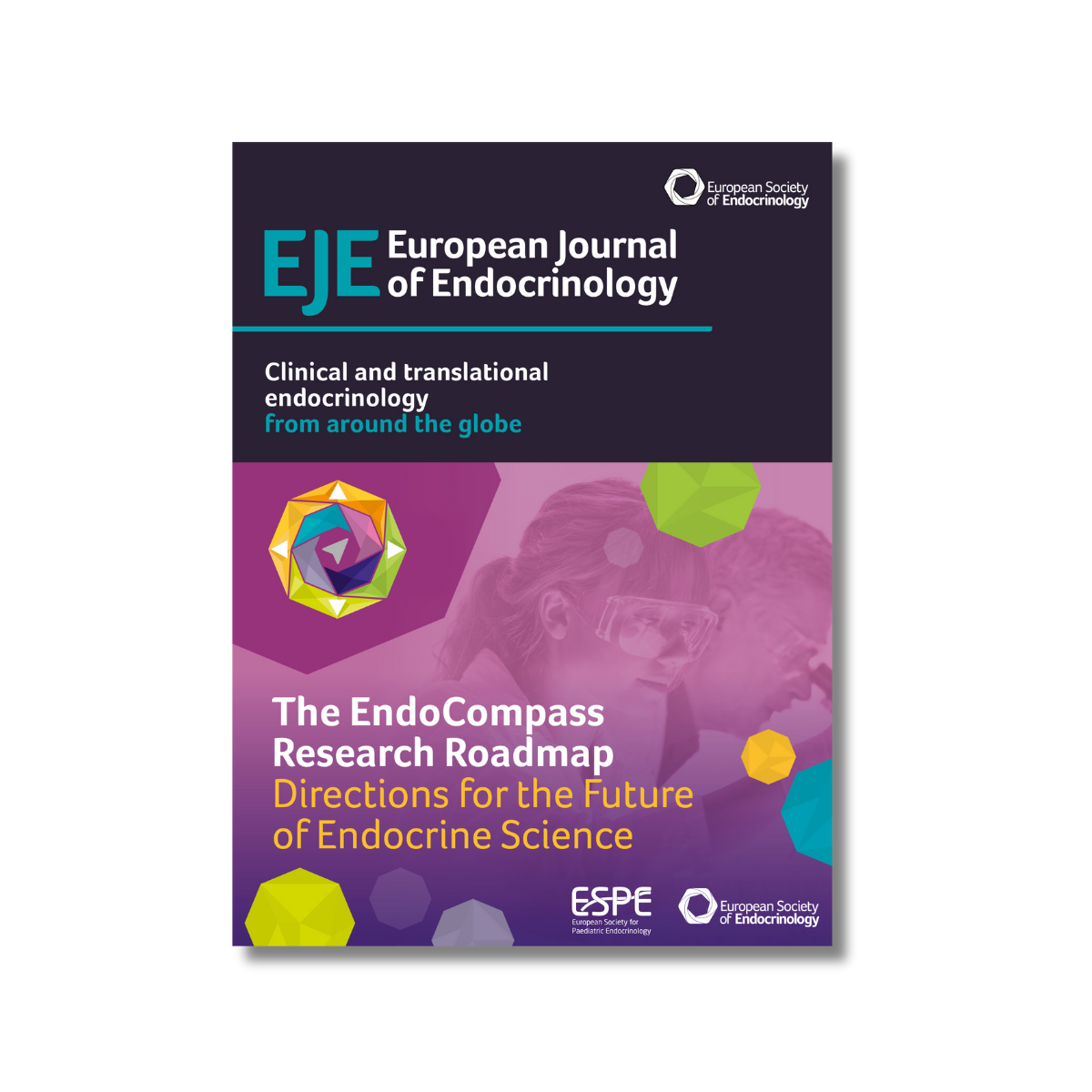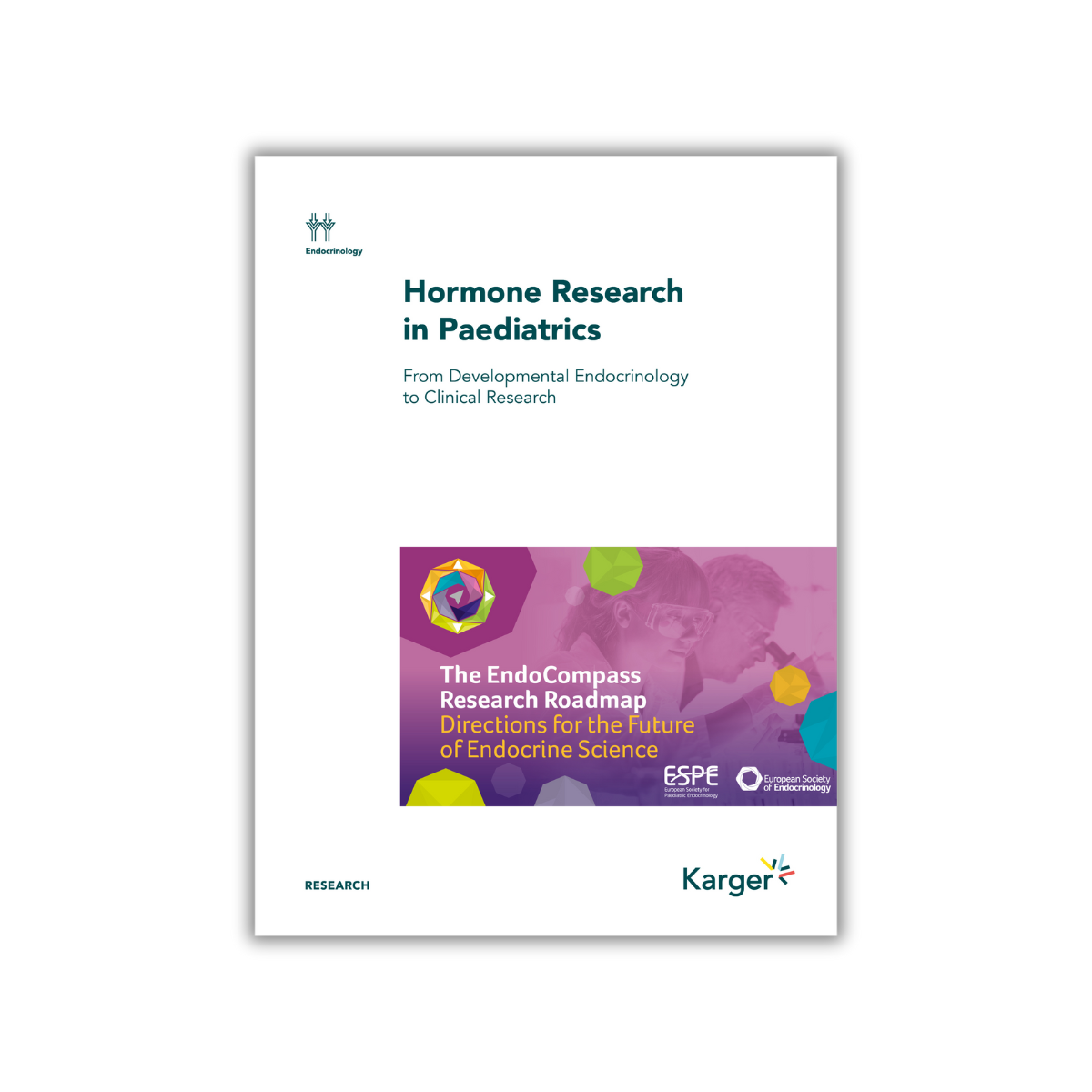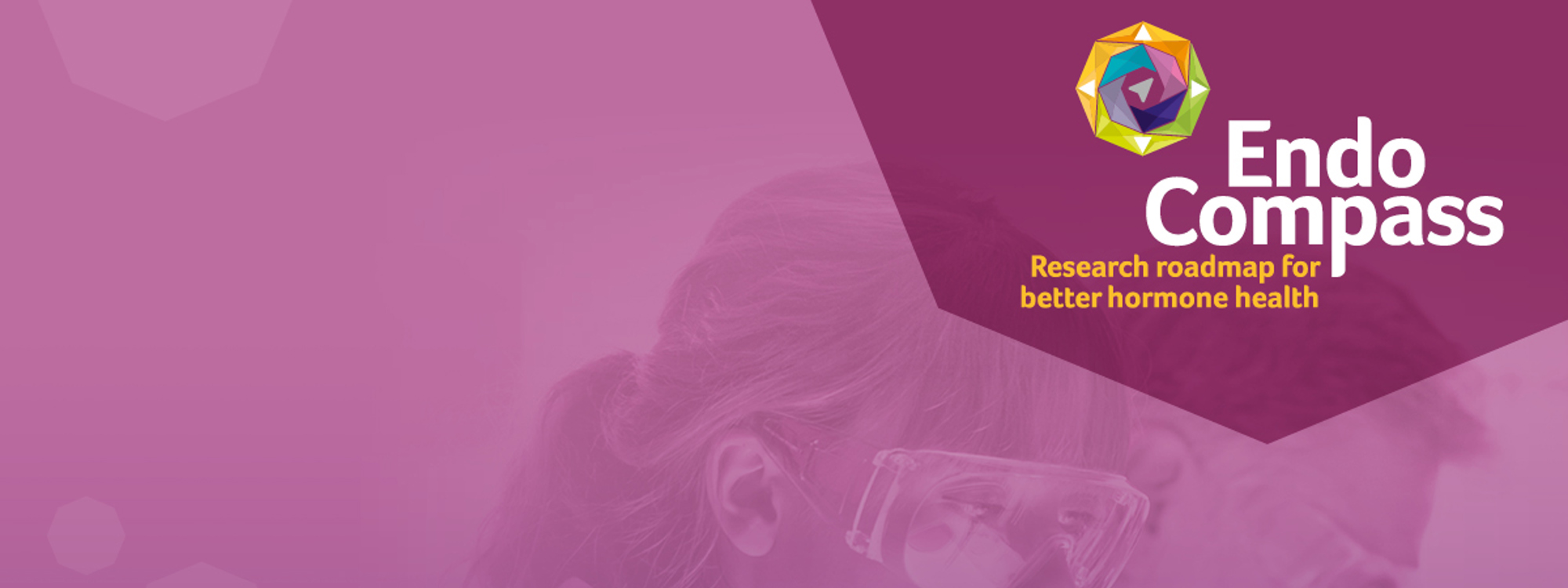
The EndoCompass Project
A collaborative initiative to shape research priorities in endocrine and paediatric endocrine science, led by the European Society of Endocrinology (ESE) and the European Society for Paediatric Endocrinology (ESPE).
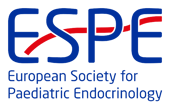

The EndoCompass Research Roadmap is published as an open-access supplement in the European Journal of Endocrinology and the Hormone Research in Paediatrics journal.
ESE and ESPE have created a Toolkit with resources to help you use, share and talk about the Roadmap, online and at in-person events and meetings.
This includes:
- EndoCompass logo
- Social media graphics
- A3 infographic with key messages
- Additional ‘Research Roadmap’ graphics
- Template slides to adapt for your own meetings and workshops
- Media kit
- Key info and summary slides for each article/chapter in the supplement
Shaping the future of endocrine research
Endocrine diseases affect millions of people across Europe, yet research into hormone health remains underfunded and fragmented. The EndoCompass Roadmap aims to change this by setting out what’s required to make strategic and equitable funding a reality.
Developed by 228 experts from across Europe, and covering all major endocrine fields, the roadmap outlines specific research needs and opportunities in eight specialist areas and six cross-cutting areas of endocrine health and disease. These recommendations are intended to inform funding and policy decisions at European and national levels, enhance the coordination and visibility of endocrine research, and ultimately contribute to better health for all.
By clearly defining research gaps, EndoCompass will also help:
- Articulate research priorities in service of other funding mechanisms
- Attract and encourage young researchers in endocrine research
- Align the endocrine community around shared research goals
- Improve patient care by identifying clinical priorities
- Drive innovation in areas like endocrine-disrupting chemicals (EDCs) and artificial intelligence (AI) in healthcare
Uniting Europe’s endocrine community
EndoCompass represents the collective expertise of the European endocrine community, bringing together clinical experts, researchers, patient advocacy groups and specialist partners. The project is jointly led by the European Society of Endocrinology (ESE) and the European Society for Paediatric Endocrinology (ESPE), reflecting endocrinology's impact at every stage of life.
A cross-disciplinary collaborative effort
Numerous experts in clinical, translational and basic science collaborated in the development of the Roadmap, alongside contributions from across the research pipeline, including biochemists, molecular biologists, clinician researchers and epidemiologists. External researchers in cross-cutting areas, such as endocrine-disrupting chemicals (EDCs) and artificial intelligence (AI), provided additional expertise to ensure the Roadmap reflected the latest advancements and interdisciplinary connections in endocrine research.
The patient perspective
To ensure EndoCompass is truly relevant to those most affected – the patients – their voices have been central throughout the process. Several Patient Advocacy Groups and individuals worked closely with researchers and clinical experts to shape research recommendations that address their lived experiences.
For more information, please contact the EndoCompass Roadmap project manager, Srđan Pandurević.
Project jointly led by:
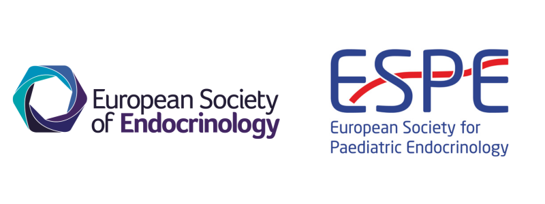
Project partners:

Thanks also to the patient advocacy groups that provided a patient perspective in the selection of research priorities: British Thyroid Foundation, Congenital Hyperinsulinism International, The International Neuroendocrine Cancer Alliance, Living with CAH, MRKH Connect, Thyroid Federation International, Turner Syndrome Support Society, Varia Suisse.
We are also grateful to the early career representatives of the ESE Young Endocrinologists and Scientists (EYES) and the Young ESPE group (YES) for their contribution to the project.
Martin Fassnacht, ESE co-lead
Eleanor Davies, ESE co-lead
Martine Cools, ESPE co-lead
Evelien Gevers ESPE co-lead
Cynthia Andoniadou
Jérôme Bertherat
Felix Beuschlein
Simona Glasberg
Anita Hokken-Koelega
Anton Luger
Jonathan Mertens
Robin Peeters
Alberto Pereira Arias
Martin Reincke
Specialist areas (listed alphabetically)
Adrenal and Cardiovascular Endocrinology
Leads: Guillaume Assié, Eystein S Husebye, Nils Krone and Maria-Cristina Zennaro
Authors: Eystein S Husebye, Guillaume Assié, Nils Krone, John C Achermann, Barbara Altieri, Laurence Amar, Marta Araujo-Castro, Morris J Brown, Ruth T Casey, Hedi L Claahsen-van der Grinten, Eleanor Davies, Jaap Deinum, Christa E Flück, Darko Kastelan, Matthias Kroiss, Paolo Mulatero, Saila Laakso, Simon H Pearce, Martin Reincke, Nicole Reisch, Mercedes Robledo, Cristina L Ronchi, Dimitra A Vassiliadi, Verena Wiegering, Maria-Christina Zennaro
Calcium and Bone Endocrinology
Leads: Wolfgang Högler, Katharina Jähn-Rickert and Peter Kamenicky
Authors: Katharina Jähn-Rickert, Karin Zibar Tomšić, Athanasios D Anastasilakis, Jean-Philippe Bertocchio, Maria Luisa Brandi, Martin Fassnacht, Moira Shang-Mei Cheung, Evelien Gevers, Neil Gittoes, Outi Mäkitie, Gabriel Ángel Martos-Moreno, Petar Milovanovic, Adalbert Raimann, Michaela Tencerova, Elena Tsourdi, Annegreet G Vlug, Wolfgang Högler, Peter Kamenický
Cancer and Endocrinology
Leads: Jason S Carroll, Frédéric Castinetti, Cecilia Follin, Raúl M Luque and Annemarie A Verrijn Stuart
Authors: Jason S Carroll, Frederic Castinetti, Cecilia Follin, Raul M Luque, Annemarie A Verrijn Stuart, Aleksander Giwercman, Simona Grozinsky-Glasberg, Csilla Krausz, Stavroula A Paschou, Robin Peeters, Carolina R C Pieterman, Pauline Romanet, Juan M Jiménez-Vacas, Hanneke M van Santen, Karin Zibar Tomšic
Diabetes and Obesity
Leads: Indi Bannerjee, Chantal Mathieu, Uberto Pagotto, Elisabeth F C van Rossum and Martin Wabitsch
Congenital Hyperinsulism lead: Indi Banerjee
Authors: Chantal Mathieu, Manuela Meireles, Uberto Pagotto, Martin Wabitsch, Indraneel Banerjee, Alberto Bartolomé, Tadej Battelino, Julia Beck, Francesco Chiarelli, Diva D De Leon, Klemen Dovč, Marwan El Ghoch, Alfonso Galderisi, Evelien Gevers, Pieter Gillard, Belma Haliloglu, Henrike Hoermann, Boris Mankovsky, Jonathan Mertens, Klaus Mohnike, Richard Oram, Tai Pasquini, Ewan Pearson, Thomas R Pieber, Snezana Polovina, Julie Raskin, Marcia Roeper, Lisa Ruck, Maria Salomon Estebanez, Tsvetalina Tankova, Paul Thornton, Elisabeth F C van Rossum, Rade Vukovic, Chris Worth, Agnieszka Zachurzok
Growth Disorders
Leads: Evelien F Gevers, Anita C Hokken-Koelega and Maithé Tauber
Authors: Evelien F Gevers, Anita C Hokken-Koelega, Maithé Tauber, Gerhard Binder, Elena G Bochukova, Sebastien G Bouret, Assumpta Caixàs, Justin H Davies, Andrew Dauber, Thomas Edouard, Thomas Eggermann, Eloise Giabicani, Irène Netchine, Ola Nilsson, Kristina Saravinovska, Manouk van der Steen, Marco Tartaglia, Katrina Tatton-Brown, I Karen Temple, Armelle Yart, Martin Zenker
Pituitary Endocrinology and Neuroendocrine Tumours
Leads: Justo p Castaño, Mehul Tulsidas Dattani, Simona Grozinsky-Glasberg, Niki Karavitaki and Marianne E Pavel
Authors: Justo P Castano, Mehul Tulsidas Dattani, Simona Grozinsky-Glasberg, Niki Karavitaki, Marianne E Pavel, Cynthia Andoniadou, Krystallenia Alexandraki, Cristina Capatina, Manuela Cerbone, Diego Ferone, Hoong-Wei Gan, Johannes Hofland, Leo J Hofland, Alejandro Ibanez-Costa, Mirela-Diana Ilie, Andrea M Isidori, Marta Korbonits, Beata Kos-Kudła, Mohamad Maghnie, Giovanna Mantovani, Monica Marazuela, Gerald Raverot, Aldo Scarpa, Katharina Schilbach, Marily Theodoropoulou, Hanneke M van Santen, Maria Chiara Zatelli
Reproductive and Developmental Endocrinology
Leads: Martine Cools, Anders Juul, Csilla Krausz and Đuro Macut
Authors: Martine Cools, Csilla Krausz, Anders Juul, Djuro Macut, Marianne Skovsager Andersen, Anna-Maria Andersson, Cynthia L Andoniadou, S Faisal Ahmed, Julie Bakker, Anu Bashamboo, Hermann M Behre, Marco Bonomi, Alexander Siegfried Busch, Chloë De Roo, Arianne Dessens, Muhammad Fakhar-I-Adil, Flaminia Fanelli, Alessandra Daphne Fisher, Christa Flück, Alessandra Gambineri, Aleksander Giwercman, Claus H Gravholt, Sabine Hannema, Björn Heindryckx, Olaf Hiort, Nadine C Hornig, Sasha Howard, Lourdes Ibáñez, Martin Blomberg Jensen, Niels Jørgensen, Sarantis Livadas, Angela Lucas-Herald, George Mastorakos, Maria Cristina Meriggiola, Ken Ong, Milica Opalic Palibrk, Duarte Pignatelli, Nelly Pitteloud, Ewa Rajpert-De Meyts, Rodolfo Rey, Ralitsa Robeva, Carlotta Pozza, Stefan Schlatt, Giorgia Spaggiari, Lloyd Tack, Manuel Tena-Sempere, Herman Tournaye, Guy T’Sjoen, Norah Van Mello, Walter Vena, Bulent O Yildiz, Francis de Zegher
Thyroid Endocrinology
Leads: Rosella Elisei, Juliane Léger and Agnieszka Piekiełko-Witkowska
Authors: Agnieszka Piekiełko-Witkowska, Rossella Elisei, Juliane Leger, Běla Bendlová, Barbora Bulanová Pekova, Philippe Caron, Cosimo Durante, Martin Fassnacht, Ulla Feldt-Rasmussen, Helena Filipsson Nyström, Heleen Jansen, Josef Köhrle, Aleksander Kuś, Marian Ludgate, Jonathan Mertens, Małgorzata Oczko-Wojciechowska, Catherine Peters, Nadia Schoenmakers, Athanasia Stoupa, Hanneke van Santen, Pierpaolo Trimboli, Paul van Trotsenburg, W Edward Visser
Transverse areas (listed alphabetically)
Artificial Intelligence
Leads: Guillaume Assié and Gustavo Carneiro
Authors: Guillaume Assié, Gustavo Carneiro, Eleanor Davies, Antoan Stefan Šojat, Jonathan Mertens
Endocrinology Across the Lifespan
Leads: Martine Cools, Evelien Gevers, Anita Hokken-Koelega, Gudmundur Johannsson and AJ van der Lely
Authors: Evelien F Gevers, Martine Cools, Anita C Hokken-Koelega, Yulia Matskevich, Aart Jan van der Lely, Mathis Grossmann, Gudmundur Johannsson
Environmental Endocrinology
Leads: Anna-Maria Andersson, Stefano Cianfarani and Josef Köhrle
Authors: Anna-Maria Andersson, Stefano Cianfarani, Josef Köhrle, Katharina M Main, Anne-Simone Parent, Robin Peeters, Martin Reincke, Kristina Saravinovska, Maria E Street
Endocrine Laboratory Medicine
Lead: Annemieke Heijboer
Authors: Annemieke C Heijboer, Jacquelien J Hillebrand, Brian Keevil, Aurelie Ladang, Eleanor Davies, Jonathan Mertens, Tomris Ozben, Sanja Stanković, Antonius E van Herwaarden, Véronique Raverot
Rare Diseases
Authors: Olaf Hiort and Alberto Pereira Arias
The Place of Endocrinology in European Research Funding – An Analysis of Horizon 2020
Authors: Dirk De Rijdt, Yulia Matskevich and Srđan Pandurević
EndoCompass is a resource for the whole community to cite and share. Here are some ways to get started:
- Navigate EndoCompass: What is EndoCompass and where can you find it?
- Explore and engage: How do the recommendations relate to your area of work?
- Spread the word: How can you help share EndoCompass with colleagues, organisations and networks to strengthen its impact?
- Widen the impact: How can you help turn the recommendations into action?
You will find resources to help you in the EndoCompass Toolkit.
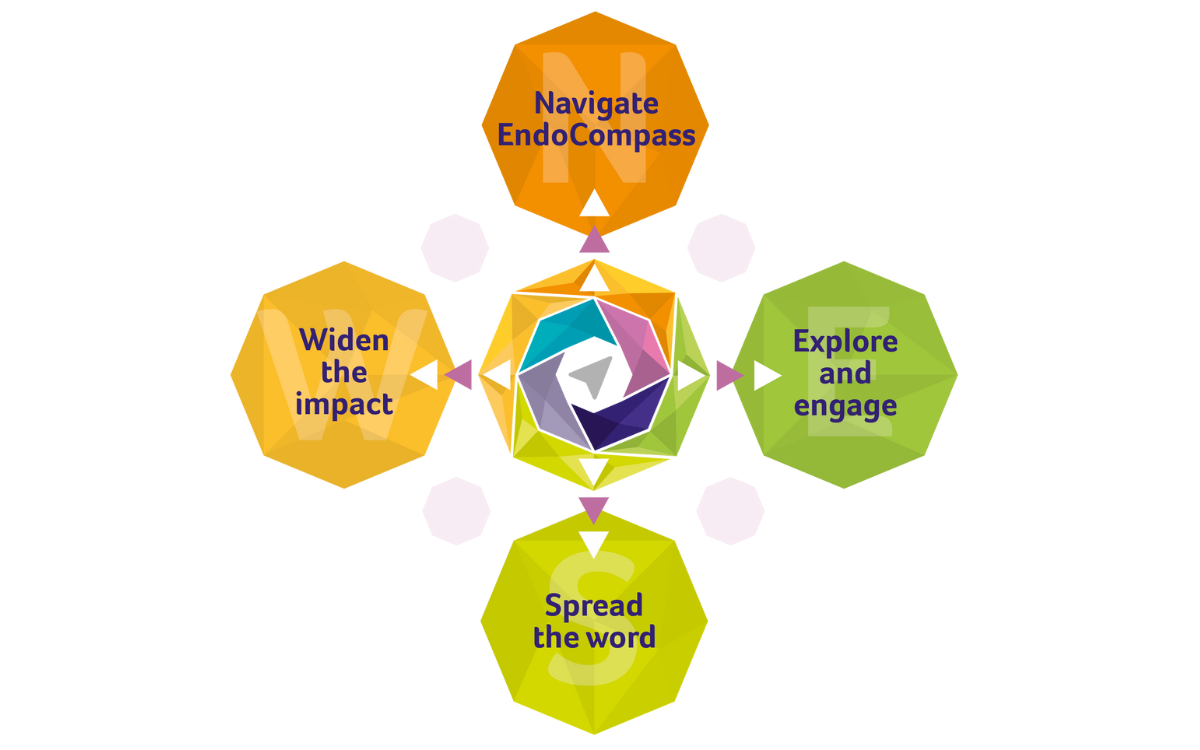
ESE and ESPE have created a Toolkit with resources to help you use, share and talk about the Roadmap, online and at in-person events and meetings. This includes:
- EndoCompass logo
- Social media graphics
- A3 infographic with key messages
- Additional ‘Research Roadmap’ graphics
- Template slides to adapt for your own meetings and workshops
- Media kit
- Key info and summary slides for each article/chapter in the supplement
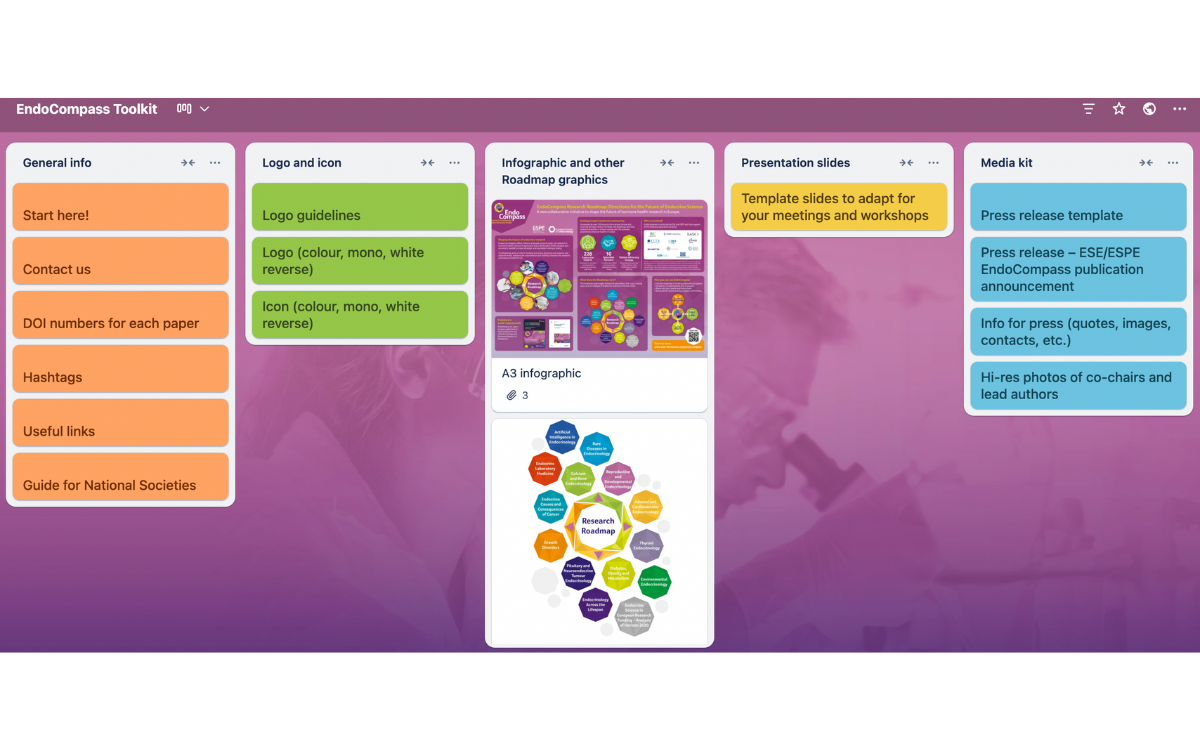
The European endocrine community got a first look at EndoCompass at the Joint Congress of the European Society of Endocrinology (ESE) and the European Society for Paediatric Endocrinology (ESPE) in Copenhagen (10–13 May 2025), ahead of its forthcoming publication this summer.
